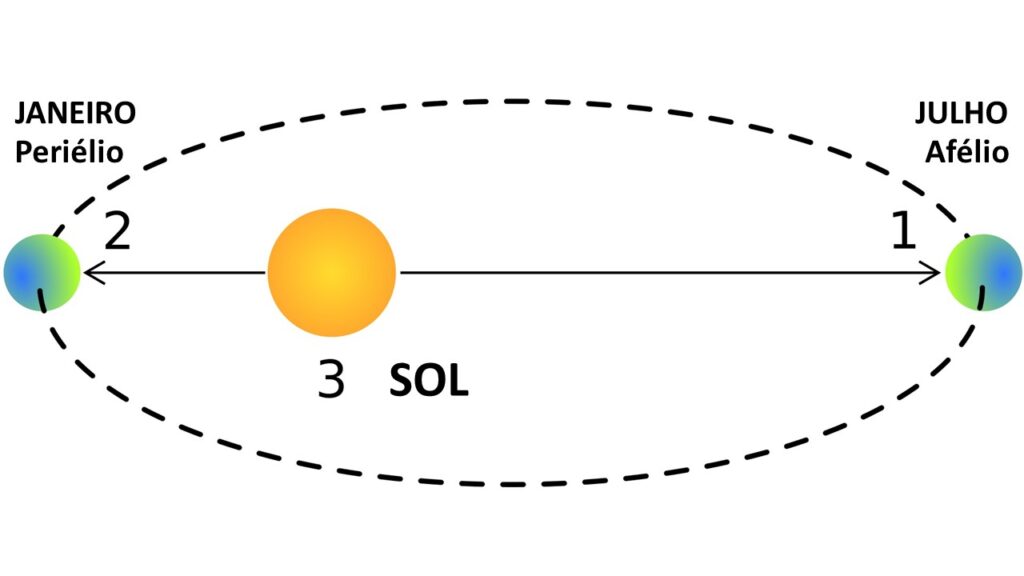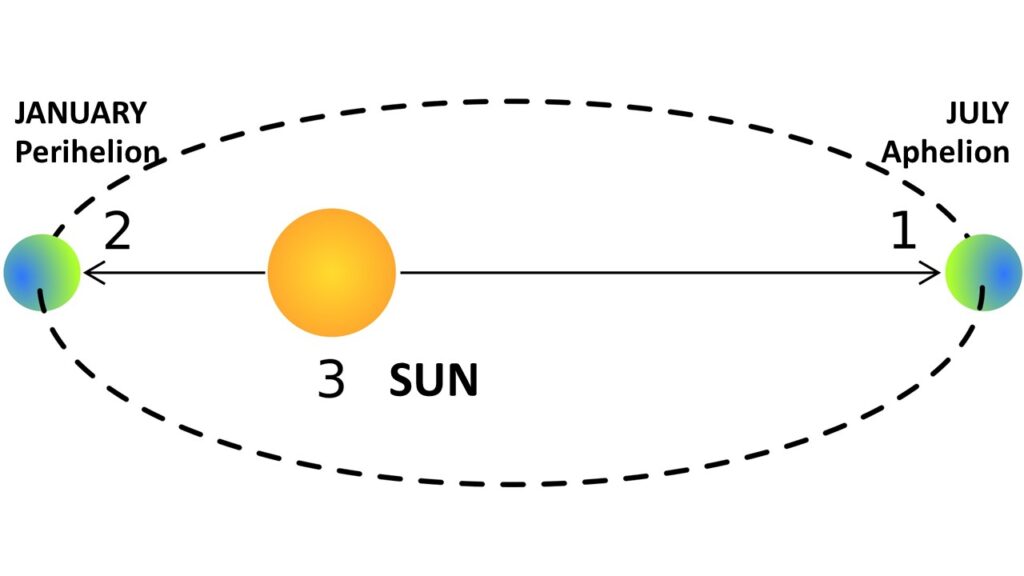2 Janeiro
Este é o dia em que a Terra passa pelo periélio ou seja, pelo ponto da sua órbita mais próximo do Sol. Por isso é que está tanto calor, certo? Bem, se o leitor estiver no hemisfério sul, até poderia pensar que sim. Mas aqui no hemisfério norte, a tiritar como estamos, não parece muito lógico, pois não? De facto, as estações do ano não têm a ver com a distância da Terra ao Sol, e sim com a inclinação do eixo de rotação. Mas a distância ao Sol influencia de facto a duração das estações.
Como Kepler descobriu e descreveu numa fórmula matemática, os planetas deslocam-se mais rapidamente quando estão mais perto do Sol. E por isso o inverno setentrional (e o verão meridional) é mais curto do que o verão (e o inverno do sul). Portanto, hoje pelas 13.51 UTC a Terra estará a deslocar-se a cerca de 30 km/s, e a uma distância de um pouco mais de 147 milhões de km do Sol. Daqui a seis meses, essa distância será maior por cerca de cinco milhões de km.
O que quer dizer que a órbita da Terra, apesar de elíptica, é quase circular, com uma excentricidade de 0.0167. O que, por sua vez, quer dizer que as ilustrações que se vêem em manuais escolares e outros locais são tremendamente exageradas. Por exemplo, a que a acompanha este texto mostra uma elipse com uma excentricidade de aproximadamente 0.38. Se fosse este o caso da Terra, então sim, teríamos a distância ao Sol a influenciar tremendamente o clima do nosso planeta…

Today the Earth passes through perihelion, the point in its orbit where it’s closest to the Sun. That’s why we are facing all this heat, right? Well, if the reader is in the southern hemisphere, she would be forgiven for thinking that way. However, here in the north, trembling from the cold, that doesn’t seem very logic, does it? In fact, the seasons have nothing to do with the distance between the Earth and the Sun; they are a consequence of the inclination of the rotation axis of the planet. Still, the distance to the Sun does affect the duration of the seasons.
As Kepler discovered and described in a mathematical expression, the planets travel faster when they are closer to the Sun, And so, the northern winter (and the southern summer) is shorter than the summer (and the southern winter). Thus, today at 13.51 UTC the Earth will be speeding through space at about 30 km/s, at a distance of a little more than 147 million km from the Sun. In six months, that distance will be larger by about five million km.
All this means that the orbit of the Earth, although elliptical, is almost circular, with an eccentricity of 0.0167. Which in turn means that the illustrations that can be seen in school books and other instances are tremendously exaggerated. Case in point, the one that you can see with this text shows an ellipse with an eccentricity of around 0.38. Were this the case of the Earth, well, then we would see the distance to the Sun affecting the climate of our planet – in a big way…



Leave a Reply